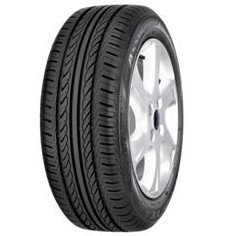We all know that winter tires provide extra safety for driving during the winter months. Thanks to their special tread design and rubber compounds formulated for low temperatures, winter tires help ensure better stability on snowy and icy roads.
Now that spring has quietly arrived, what should we do with the winter tires we've used? Can winter tires still be used in other seasons? Should we switch to summer tires right away? How should we store the winter tires we've taken off? Let’s answer these questions one by one.

1. Should you replace winter tires after the winter season? What are the downsides of not replacing them?
Answer: Compared to summer tires, winter tires provide better grip and braking performance. Therefore, after the winter season, you should replace your winter tires. If you don’t, you will experience increased noise, higher fuel consumption, longer braking distances on dry roads compared to regular tires, and the tread will wear out quickly. This will force you to buy new winter tires when the next winter arrives.
2. How should winter tires be stored once removed?
Answer: Tires, being made of rubber, should be stored away from direct sunlight, heat sources, and electrical equipment. A cool, shaded place, such as a garage, is ideal. Alternatively, you can have them stored by a tire shop.
3. Can winter tires be used in normal temperatures? What impact will it have on driving? How will grip, wear, noise, and fuel consumption be affected?
Answer: Winter tires can still be used, but they are less effective in normal temperatures. On dry roads, winter tires have a longer braking distance than regular tires, which can reduce driving safety. Additionally, their grip decreases in warmer weather, resulting in increased noise, higher fuel consumption, and faster tread wear, which reduces their lifespan.
4. Can winter tires be mixed with regular tires or all-season tires?
Answer: It’s best to avoid mixing winter tires with regular or all-season tires. Differences in tread patterns, structure, and rubber compounds can lead to inconsistent grip and wear, which can compromise safety and handling.
5. How can you determine if these winter tires can be used next winter?
Answer: Before installing them, check the tire’s production date and ensure it is still within the manufacturer's warranty period (usually 3 or 5 years). If the tread has not yet reached the wear indicator, and there are no bulges or cracks, the tires can still be used.
6. If the winters in your area are not very cold, is it okay not to switch to winter tires?
Answer: In some areas, winter temperatures are not extremely cold, and snow or icy weather is brief. If you don't switch to winter tires, it's recommended to start the vehicle slowly after it has been parked for a long time to allow the tires to warm up and regain their performance. Alternatively, you can move the newer tires to the rear wheels to reduce the risk of skidding when turning on slippery surfaces and maintain better vehicle stability.
7. If you don’t want to switch to winter tires, what all-season tires are suitable for use throughout the year?
Answer: Many manufacturers offer all-season tire options, such as Goodyear's Wrangler HP AW all-weather tires for city SUVs or the Bridgestone Assurance Fuelmax AW all-weather tires. These tires are designed to handle a variety of road conditions across different temperatures.

After surviving a harsh winter, spring is finally approaching. As you pack away your thick winter clothes, don’t forget to upgrade your car’s equipment as well. Change out the winter tires and get ready to enjoy the warmth and sunshine with a lighter load!



